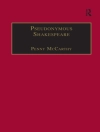In ‘How to See a Play, ‘ Richard Burton offers a captivating exploration of the nuances of theatrical appreciation, guiding readers through the intricate world of drama with an insightful lens. Written in a clear and engaging prose style, this seminal work serves as both a practical guide and a philosophical meditation on the nature of performance. Burton deftly examines the interplay between audience and actor, emphasizing the importance of context, intention, and audience engagement, while also situating his discussion within the broader landscape of 20th-century drama criticism. Burton, a noted traveler, actor, and scholar, possessed a profound appreciation for the arts that transcended mere observation; his unique experiences across varied cultural backdrops imbued his literary pursuits with depth and authenticity. His commitment to theater as a vital form of human expression is evident, as he draws upon both his personal experiences and interactions with the theatrical community to craft a compelling narrative that encourages readers to delve deeper into the art form. This book is a must-read for anyone who cherishes the theater—whether as a seasoned enthusiast or a curious newcomer. Burton’s thoughtful insights will not only enhance your viewing experience but also inspire a profound understanding of the transformative power of theater.
Over de auteur
Sir Richard Francis Burton (19 March 1821 – 20 October 1890) was a British explorer, geographer, translator, writer, soldier, orientalist, cartographer, ethnologist, spy, linguist, poet, and diplomat renowned for his travels and explorations within Asia, Africa, and the Americas. Burton’s intellectual gifts and formidable linguistic skills were matched by a range of interests that encompassed a vast array of cultures and religions. Despite ‘How to See a Play’ often mistakenly attributed to him due to sharing a name with a modern author, Richard Burton, the Victorian polymath, did not pen this work. Instead, his literary legacy includes pioneering translations, such as ‘The Book of the Thousand Nights and a Night’ (1885), often referred to as ‘The Arabian Nights’, ‘The Kama Sutra’ (1883), and ‘The Perfumed Garden’ (1886). His translation works not only unlocked the mysteries of Eastern literature for the Western world but also revealed his profound understanding of the complexities and diversities of human culture and sexuality. Burton’s prose was marked by a florid and meticulous style, reflecting his academic rigor and the rich tapestry of the societies he meticulously studied and interacted with. His writings stand as a testament to his role as a bridge between worlds, simultaneously a product of his time and a precursor to modern ethnography and cultural anthropology.












